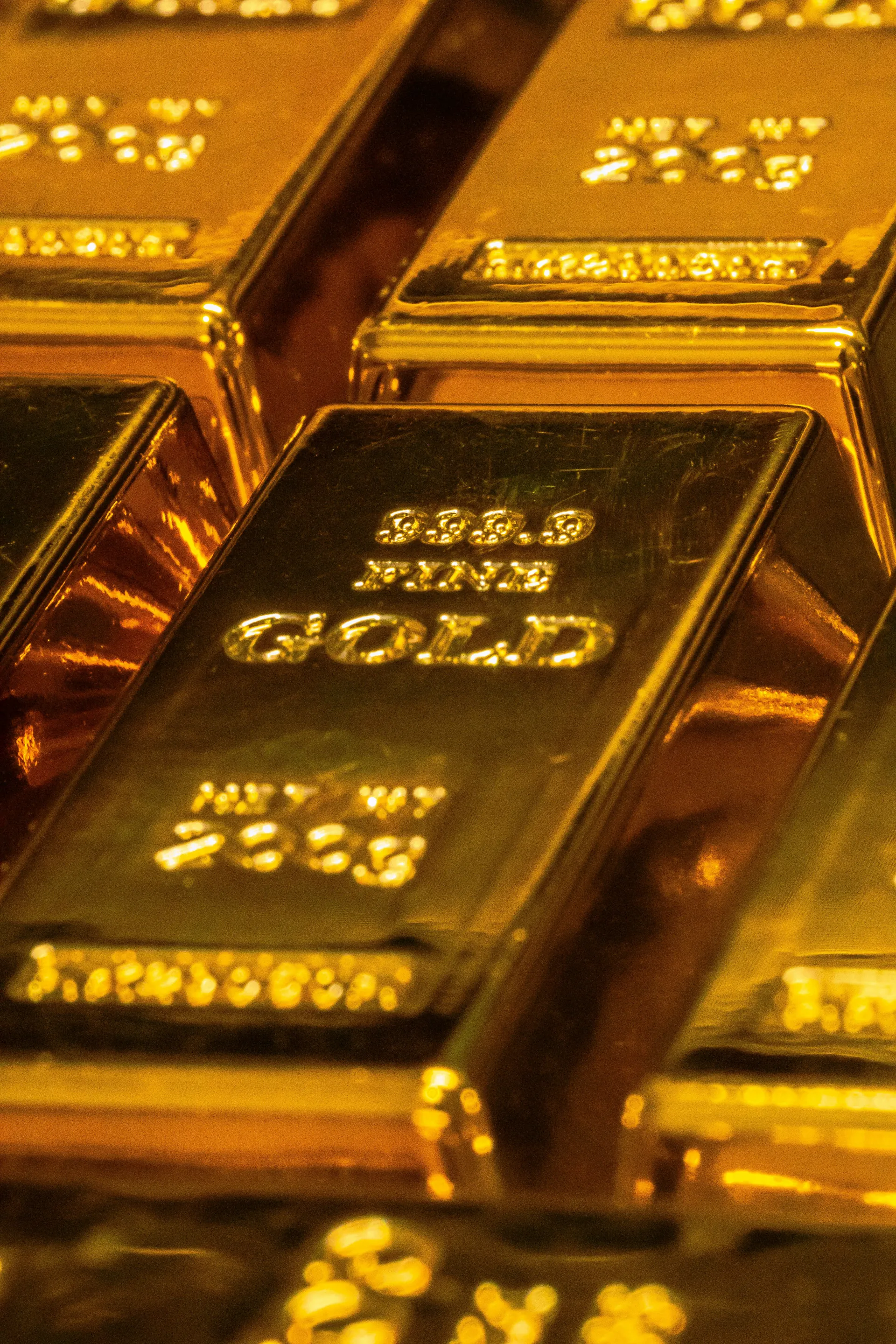Introduction: Unraveling the Connection between Gold Prices and Trade Tensions
Amidst the escalating trade war between the United States and its key trading partners, notably China, investors are increasingly turning to safe havens for their assets. Gold stands out as a prime example, with its prices climbing for the seventh consecutive week. This rise is intimately linked to the mounting trade tensions worldwide.
The recent tariffs imposed by President Donald Trump on Chinese goods, alongside steel and aluminum imports from nations such as Canada and Mexico, have triggered significant upheaval in financial markets. In response, China has imposed tariffs on approximately $21.2 billion worth of U.S. exports, exacerbating the climate of uncertainty and propelling investors towards the stability offered by gold.
This significant uptick in gold prices mirrors a larger economic sentiment. As trade conflicts intensify, they foster an atmosphere of economic instability, thereby enhancing gold's appeal as a stable and reliable asset. Concerns over inflation, potential dips in economic growth, and the overarching uncertainty about global trade policies further contribute to the allure of gold. For investors and economists, grasping the intricate link between gold prices and trade tensions is essential.
Understanding Gold's Role as a Safe Haven Asset
Historical Context of Gold During Economic Crises
Gold has a long and storied history as a safe haven asset, particularly during times of economic turmoil. One of the most compelling examples of gold's role in such scenarios was its performance following the 2008 global financial crisis.
In the aftermath of this crisis, gold prices surged significantly, rising by nearly 24% in 2009 alone and continuing to climb into 2011. This upward trajectory was driven by investors seeking stability and a hedge against the volatility and uncertainty of the financial markets.
Historically, gold has consistently demonstrated its ability to act as a safe haven during economic downturns. For instance, during the mass Occupy Wall Street protests in 2011, gold not only survived but thrived, reflecting its resilience in the face of financial crises. This pattern is consistent with gold's performance over centuries, where it has been a go-to asset for investors worried about international crises, recessions, or conflicts.
Psychological Factors Influencing Gold Investment
The appeal of gold as a safe haven asset is also deeply rooted in psychological factors. One of the primary drivers is the fear of economic uncertainty. When investors perceive instability in the economy, they often turn to gold as a way to protect their wealth.
This fear is a powerful motivator, leading individuals to seek out assets that are perceived as stable and reliable.
Another significant psychological factor is herd mentality. When a large number of investors start buying gold, it can create a domino effect where others feel pressured to follow suit. This collective behavior can drive up gold prices and create an investment bubble, highlighting the influence of groupthink in gold investing decisions.
Emotional attachment to gold also plays an important role. Gold has a historical and cultural significance that transcends its monetary value.
Many investors form a sentimental connection to gold due to its rarity, durability, and aesthetic appeal, which can impact their investment choices even when financial analysis suggests otherwise. This emotional bond is a testament to gold's enduring status as a symbol of wealth and stability.
Impact of Trade Wars on Global Economic Stability
Overview of the Current Trade War Scenario
The ongoing trade war, especially between the United States and China, is casting a shadow over global economic stability. The Trump administration's recent expansion of Section 232 tariffs on steel and aluminum, along with new tariffs on Chinese imports, has set off a series of retaliatory actions. China has fought back with tariffs on approximately $21.2 billion worth of U.S. exports, intensifying the conflict.
This conflict extends beyond the U.S. and China, affecting global trade dynamics significantly. The U.S. has also targeted imports from Canada and Mexico with tariffs, although these were temporarily suspended, indicating the widespread impact of these measures.
The ripple effects include a major shift in trade flows, with Chinese exporters finding markets in countries like France, Germany, Canada, and Mexico. This shift is not without consequences, leading to a decrease in Chinese GDP and overall imports, and a broadening of the trade deficit with China.
Direct Consequences of Trade Disputes on Global Trade
The direct outcomes of these trade disputes are deep and wide-ranging. An escalation in tariffs, as witnessed in this trade war, could slash global exports by up to 3% and global income by as much as 1.7%.
Such a downturn results in substantial economic setbacks, with the U.S. and China facing the brunt of it—potentially losing up to 3.5% and 1.6% of their GDPs, respectively.
Industries such as agriculture, chemicals, and transport equipment in the U.S., and electronic equipment, machinery, and manufacturing in China, are among the hardest hit. Moreover, the trade war is disrupting global supply chains, leading companies to postpone investments due to uncertainty about market access. This uncertainty threatens to halt the recovery in global trade and investment, diminishing productivity and hiking the financing costs of capital.
Developing countries, which depend on trade for economic growth, are also feeling the pinch. They are grappling with diminished trade, dwindling investor confidence, and a surge in demand for substitutes, potentially derailing their economic progress and exacerbating poverty levels.
In essence, the trade war is poised to curtail global economic growth, with potential repercussions echoing the global financial crisis of 2008-09.
Future Trends: Can Gold Continue Its Upward Trajectory?
Analyzing Market Forecasts and Expert Opinions
As we look ahead to the future of gold prices, it is important to analyze the forecasts and opinions of market experts and financial institutions. Many predictions indicate a continued bullish trend for gold. For instance, InvestingHaven forecasts that gold prices could approach $3,260 in 2025, near $3,775 in 2026, and potentially peak at $5,120 by 2030.
This optimistic outlook is supported by various factors, including heightened inflation expectations and increasing central bank demand for gold.
Other financial institutions also share a bullish view. Goldman Sachs predicts a gold price of $2,700 per ounce by the end of 2025, while J.P. Morgan forecasts gold prices to reach $2,600 per ounce in the same period. Citigroup is even more optimistic, predicting gold prices to hit $3,000 per ounce due to a weakening US labor market and the Federal Reserve’s dovish pivot.
UBS and ING Bank also anticipate strong gold prices, with UBS expecting gold to average $2,365 in 2024 and exceed $2,800 in the next two years. ING Bank forecasts gold prices to reach $2,700 in the first quarter of 2025. These forecasts collectively suggest that gold is likely to maintain its upward trajectory in the coming years.
Potential Scenarios and Their Impact on Gold Prices
Several potential scenarios could influence gold prices in the future. One significant factor is the direction of monetary policy, particularly in the United States.
If the Federal Reserve were to cut interest rates, as predicted by some analysts, it could further boost gold prices. For example, J.P. Morgan's forecast assumes a Fed cutting cycle starting in November 2024, which could push gold prices to new nominal highs.
Geopolitical risks and trade tensions also play a critical role. The ongoing trade disputes, including those between the U.S. and China, and potential future conflicts such as the Russia-Ukraine crisis, could drive investors towards safe-haven assets like gold.
Tim Waterer from KCM Trade notes that if gold is to replicate its gains from the previous year, it would need to move to around the $3,300 level, which is feasible given the current geopolitical landscape.
In addition, economic scenarios such as a weakening US dollar, disinflation, and the Federal Reserve’s dovish pivot could also support higher gold prices. State Street Global Advisors suggests that gold could range between $2,600 and $2,900 in 2025, with the potential to rise to $3,100 under certain economic scenarios.
These scenarios highlight the potential for gold to continue its upward trajectory, driven by a combination of economic, geopolitical, and monetary factors.
Conclusion: Gold in the Context of Global Economic Health
In conclusion, the recent surge in gold prices, driven by escalating trade wars and global economic uncertainty, underscores gold's enduring role as a safe haven asset. Gold's historical performance during economic crises, its ability to hedge against inflation, and its resilience in the face of geopolitical tensions make it a vital component of diversified investment portfolios.
As the global economy navigates the complexities of trade disputes, monetary policy shifts, and geopolitical risks, investors would be wise to consider gold as a stable and reliable asset. With its long-term track record of protecting value and providing a buffer during crises, gold remains an essential element in maintaining economic health and stability in uncertain times.
FAQ
What are the primary factors driving the recent increase in gold prices?
The primary factors driving the recent increase in gold prices include:
- Low interest rates, making non-yielding assets like gold more attractive.
- Increased central bank purchases, particularly from emerging markets, as a hedge against economic uncertainty and to diversify holdings away from traditional fiat currencies.
- Geopolitical uncertainty, leading investors to seek safe-haven assets like gold.
How do trade war fears and tariff announcements impact gold prices?
Trade war fears and tariff announcements significantly boost gold prices as investors seek safe-haven assets amid increased uncertainty and potential inflationary pressures. Gold prices have risen due to Trump's tariff plans, which escalate global trade tensions and drive demand for gold as a hedge against inflation and market volatility.
What is the role of inflation expectations and interest rates in influencing gold prices?
Inflation expectations and interest rates significantly influence gold prices. High inflation expectations drive up gold prices as investors seek safe-haven assets to hedge against currency devaluation and potential wealth loss. Lower real interest rates, often a result of Fed rate cuts, also boost gold prices by reducing the opportunity cost of holding gold and making it more attractive compared to traditional investments like bonds.
What are the long-term gold price predictions from financial institutions and market analysts?
Financial institutions and market analysts predict a bullish outlook for gold prices in the long term. Here are some key predictions:
- Goldman Sachs and Bank of America forecast gold to reach $3,000 per ounce by the end of 2025.
- Deutsche Bank suggests a range of $2,450 to $3,050 for 2025.
- J.P. Morgan predicts an average price of $2,600/oz in 2025 and potentially $3,000/oz.
- InvestingHaven forecasts gold to approach $3,260 in 2025, $3,775 in 2026, and peak at $5,120 by 2030.
- Other institutions like Citibank, Wells Fargo, and UBS also project prices ranging from $2,700 to $3,000 per ounce for 2025.


